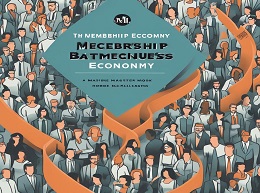Lean Analytics

"Lean Analytics" by Alistair Croll and Benjamin Yoskovitz is a comprehensive guide to using data to drive decision-making and achieve success in startups. The book provides practical advice and frameworks for measuring progress, identifying key metrics, and iterating quickly to build successful businesses. In this detailed review, we'll explore the key concepts of "Lean Analytics," provide real-world examples, and reveal strategies for leveraging data to optimize performance and drive growth.
Understanding Lean Analytics:
Croll and Yoskovitz introduce the concept of lean analytics—a data-driven approach to building and growing startups based on the principles of lean startup methodology.
Example:
Dropbox used lean analytics to track user sign-ups, engagement, and referrals, iterating quickly based on data to optimize its product and grow its user base.
The One Metric That Matters (OMTM):
The authors emphasize the importance of identifying the one metric that matters most to your business and focusing on optimizing it for success.
Example:
Airbnb's OMTM was the number of nights booked, which helped the company measure its growth and focus its efforts on improving the user experience to drive more bookings.
Measuring Progress:
Croll and Yoskovitz discuss strategies for measuring progress and tracking key metrics to assess the health and performance of your startup.
Example:
Buffer tracks metrics like monthly recurring revenue (MRR) and churn rate to monitor its financial health and customer retention, allowing the company to make data-driven decisions to drive growth.
Applying Lean Analytics Frameworks:
The authors provide practical frameworks for applying lean analytics principles, including the Lean Canvas, AARRR framework, and Pirate Metrics.
Example:
Instagram used the AARRR framework to identify key stages in the user journey acquisition, activation, retention, referral, and revenue and optimize each stage to drive growth and engagement.
Iterating and Experimenting:
Croll and Yoskovitz discuss the importance of iterating quickly and experimenting with different approaches to find what works best for your startup.
Example:
Spotify conducts A/B tests on its user interface and features to gather data on user preferences and behavior, allowing the company to make data-driven decisions to improve the user experience.
Scaling with Data:
The authors explore strategies for scaling your startup with data, including building scalable analytics infrastructure and leveraging machine learning and AI.
Example:
Netflix uses machine learning algorithms to analyze user preferences and behavior, personalizing recommendations and content delivery to drive engagement and retention.
In conclusion, "Lean Analytics" offers invaluable insights and strategies for using data to drive decision-making and achieve success in startups. By understanding lean analytics principles, measuring progress, applying frameworks, iterating quickly, and scaling with data, entrepreneurs can build data-driven businesses that thrive in today's competitive landscape.













